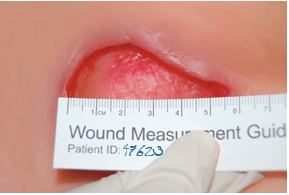How do you measure and document wound care properly?

Wound care measurement and documentation are crucial aspects of nursing. By following proper techniques, you can ensure accurate nursing documentation and values documentation. Let's dive into the process.
Key Principles of Nursing Documentation
Nursing documentation is essential for maintaining patient records and ensuring continuity of care. It serves as a legal document and helps in communication among healthcare providers. To measure and document wound care properly, follow these key principles:
- Objectivity: Record factual observations and measurements without personal opinions.
- Specificity: Describe the wound's characteristics in detail.
- Timeliness: Document findings promptly to maintain accuracy.
- Legibility: Ensure clear and legible handwriting or electronic entries.
- Security: Safeguard patient information from unauthorized access.
Step-by-Step Guide to Wound Care Measurement and Documentation
Follow this step-by-step guide to measure and document wound care effectively:
- Assessment: Begin by thoroughly assessing the wound. Observe its size, depth, color, and surrounding skin. Check for any signs of infection, such as redness, swelling, or discharge.
- Measurement: Use a transparent ruler or measuring tape to measure the wound's length, width, and depth. Record these measurements accurately. For irregular wounds, consider using a tracing method to capture their shape.
- Photography: Take clear photographs of the wound from multiple angles. Ensure proper lighting and focus to capture all details. Store the images securely in the patient's record.
- Documentation: Document all findings in the nursing notes. Include the date, time, and patient's condition. Describe the wound's appearance, measurements, and any interventions performed. Use a standardized wound assessment tool, such as the Pressure Ulcer Scale for Healing (PUSH), to ensure consistency.
- Communication: Share the documented information with the healthcare team to ensure coordinated care. Discuss the wound's progress and any concerns with the patient and their family.
- Follow-Up: Schedule regular follow-up assessments to monitor the wound's healing progress. Adjust interventions as needed.
Conclusion
Mastery of wound care measurement and documentation is essential for nurses. By following these steps and principles, you can ensure accurate nursing documentation and values documentation. This not only benefits patient outcomes but also enhances communication among healthcare providers. Remember to regularly update your knowledge and skills, and explore Nurselytic's resources to further enhance your nursing practice.
For more information on wound care measurement and documentation, visit Nurselytic's library at https://nurselytic.com/library/. To improve your nursing skills, explore Nurselytic's ATI Content Mastery Series, HESI A2 Exam, and NCLEX-RN Practice Questions.
Interactions
Comments
No comments yet.

Please log in to comment.